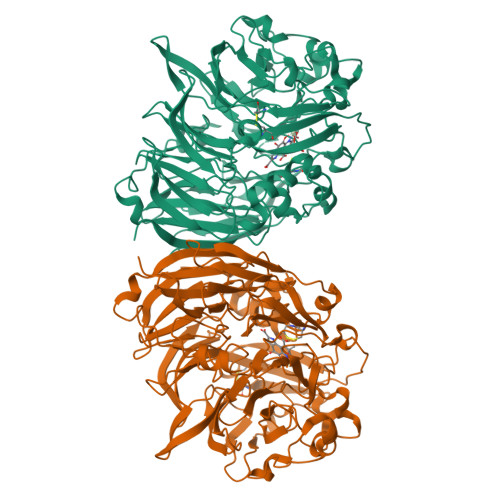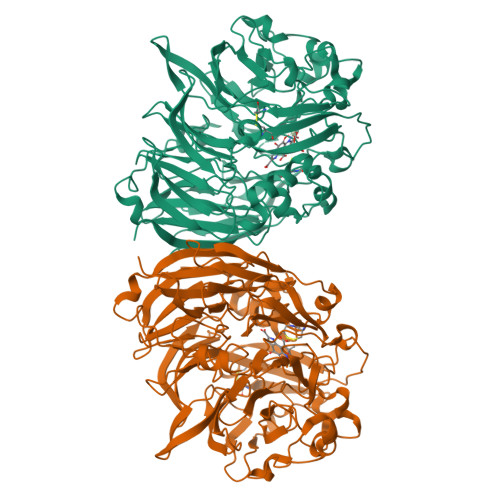Rare earth metals are essential for methanotrophic life in volcanic mudpots.
Pol, A., Barends, T.R., Dietl, A., Khadem, A.F., Eygensteyn, J., Jetten, M.S., Op den Camp, H.J.(2014) Environ Microbiol 16: 255-264
- PubMed: 24034209
- DOI: https://doi.org/10.1111/1462-2920.12249
- Primary Citation of Related Structures:
4MAE - PubMed Abstract:
Growth of Methylacidiphilum fumariolicum SolV, an extremely acidophilic methanotrophic microbe isolated from an Italian volcanic mudpot, is shown to be strictly dependent on the presence of lanthanides, a group of rare earth elements (REEs) such as lanthanum (Ln), cerium (Ce), praseodymium (Pr) and neodymium (Nd). After fractionation of the bacterial cells and crystallization of the methanol dehydrogenase (MDH), it was shown that lanthanides were essential as cofactor in a homodimeric MDH comparable with one of the MDHs of Methylobacterium extorquens AM1. We hypothesize that the lanthanides provide superior catalytic properties to pyrroloquinoline quinone (PQQ)-dependent MDH, which is a key enzyme for both methanotrophs and methylotrophs. Thus far, all isolated MxaF-type MDHs contain calcium as a catalytic cofactor. The gene encoding the MDH of strain SolV was identified to be a xoxF-ortholog, phylogenetically closely related to mxaF. Analysis of the protein structure and alignment of amino acids showed potential REE-binding motifs in XoxF enzymes of many methylotrophs, suggesting that these may also be lanthanide-dependent MDHs. Our findings will have major environmental implications as metagenome studies showed (lanthanide-containing) XoxF-type MDH is much more prominent in nature than MxaF-type enzymes.
Organizational Affiliation:
Department of Microbiology, Radboud University Nijmegen, Heyendaalseweg 135, 6525 AJ, Nijmegen, The Netherlands.





















